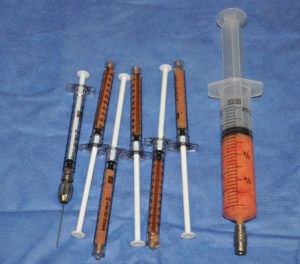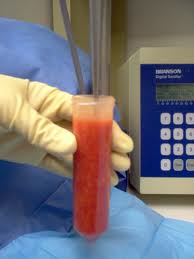Fat grafting has emerged in plastic surgery as a mainstream procedure today. While it actually has a long history dating back to as early as the 1950s, it has always been a procedure considered unworthy of serious consideration as a useful technique for either cosmetic or reconstructive surgery because it simply did not work. Yet today it is considered a standard technique whose vast potential in plastic surgery is evolving rapidly.
What has fat grafting become so accepted? The four critical steps in fat grafting, the donor site, harvest, preparation, and injection, has turned into a variety of techniques and technologies that generate much professional discussion and debate. This is a long way from the days when fat was simply suctioned, jammed into a syringe and injected. Because of the presence of stem cells and other factors in fat, even the name of fat grafting has become more complex with such monikers as ‘stem cell fat grafts’, ‘enhanced fat grafts’ and other marketing driven names.

Type I One of the main and historic types of fat grafting is in the face. This is done for very small volume enhancements like the nasolabial folds and the lips (less than 10cc, Type Ia) or larger volume augmentations such as for facial lipoatrophy and facial rejuvenation. (10cc to 50cc, Type Ib) The recipient sites have normal tissues that have received no radiation and are unscarred for the most part. With the need for small volumes, what one believes is the best donor site can usually be used. Processing of the fat can ideally be done as even centrifugation of this small volume can be done within minutes. The unwanted liquids can also be quickly decanted using simple telfa pads.
Type II A rising use of fat grafting is in augmentation of the buttocks and breasts. Instead of synthetic implants, large volumes of fat are infused to create mound enhancement. Because of the greater natural fat volumes in the buttocks, fat is injected directly with no pre- or postsurgical manipulation. The breast, however, usually has scant recipient breast tissue and is best done in conjunction with pre- and postsurgical stimulation through an external suction device. Eitehr way the fat is injected into healthy tissues deficient in volume as they may be. The processing of the fat tends to be less extensive due to the high volumes needed.
Type III Because few good options exist for treating complex wounds (irradiated or severely scarred) other than pedicled or free tissue transfers, the injection of healthy fat and its constituents ‘healing’ elements is very appealing. While multiple treatments are frequently needed, the total volumes are usually small compared to Type II fat grafting. It is finding its greatest use as an aid in breast reconstruction but other The fat graft may not need to be as concentrated as some of the liquid elements of the fat graft may contain useful healing agents such as platelets and growth factors. The contributions to improving the vascularity of the wound may be more than just the cellular components in the fat graft. This conjecture awaits further scientific study.
Type IV Fat grafts do not always need to be immediately derived by liposuction harvest. Fat grafts will likely be harvested, sent for processing, and then injected into the patient at a later date as a form of future treatments for a multitude of aesthetic and medical concerns. Such modification or extracts will focus on stem cell concentrations delivered with or without the fat component. Such treatment approaches are now under FDA scrutiny and can only be done as part of a sanctioned clinical study. These enriched fat grafts will likely be small volume and intended for medical or reconstructive purposes.

Dr. Barry Eppley
Indianapolis, Indiana


